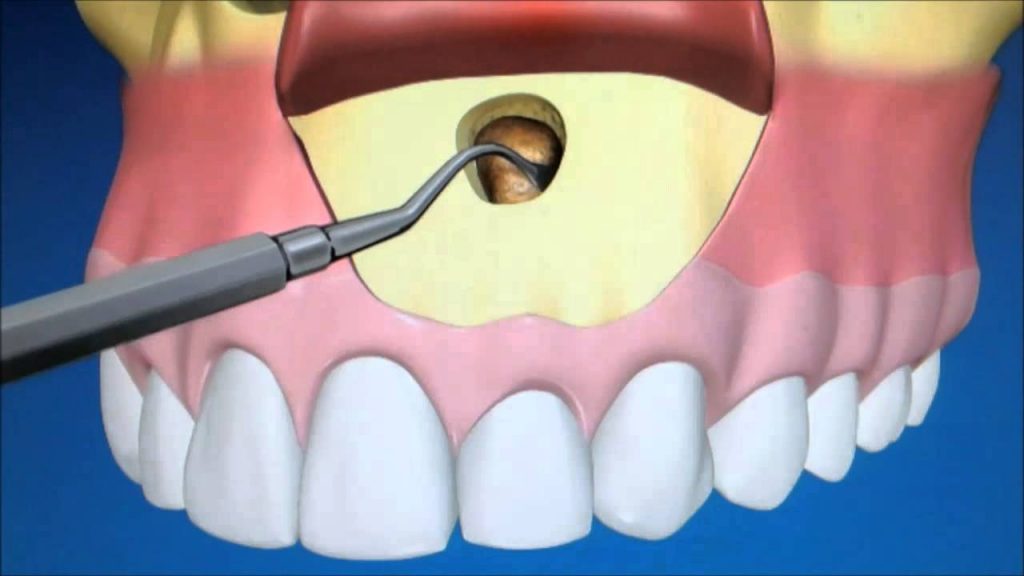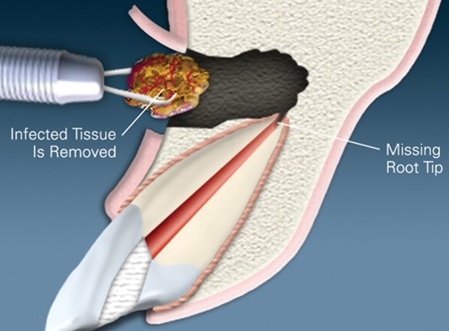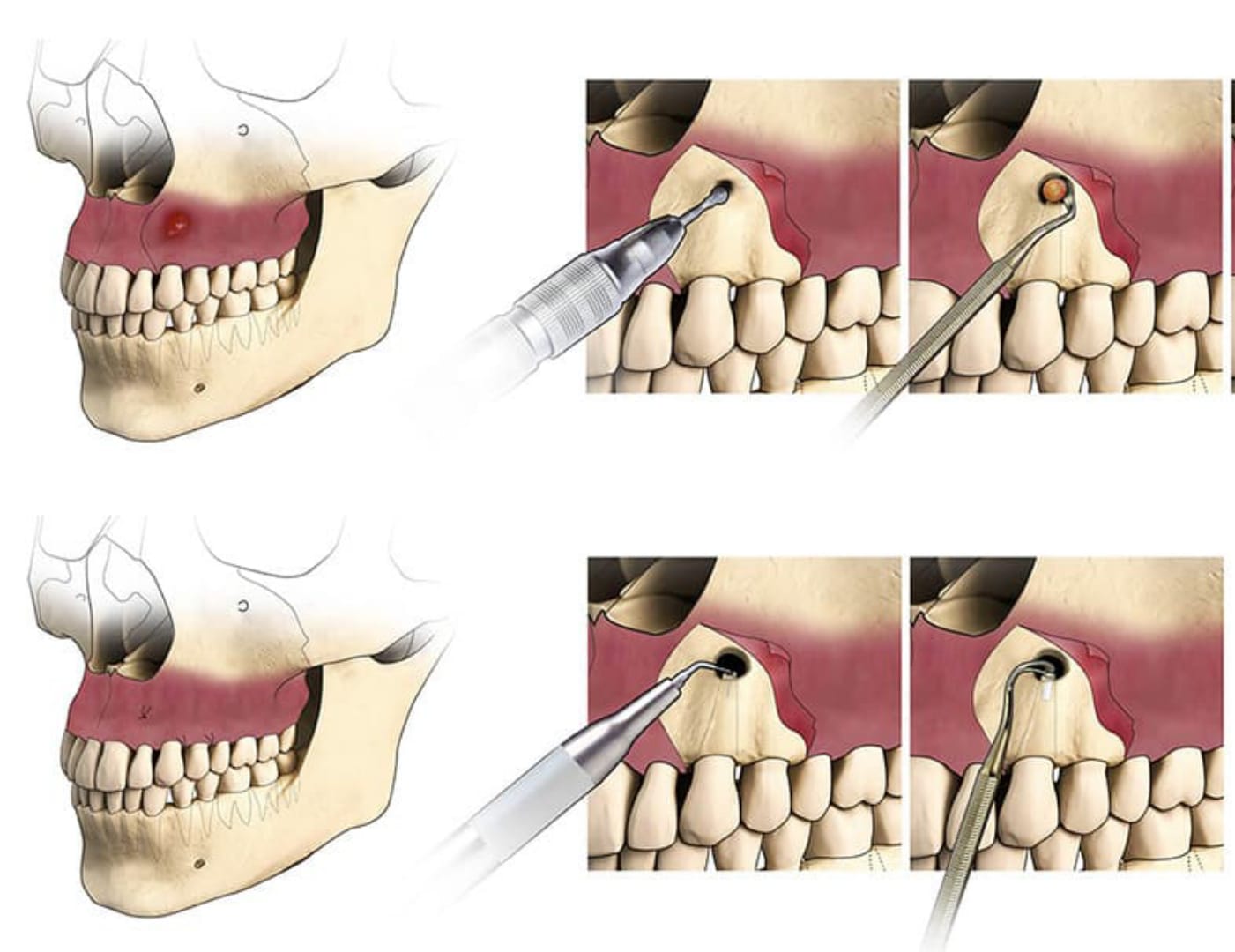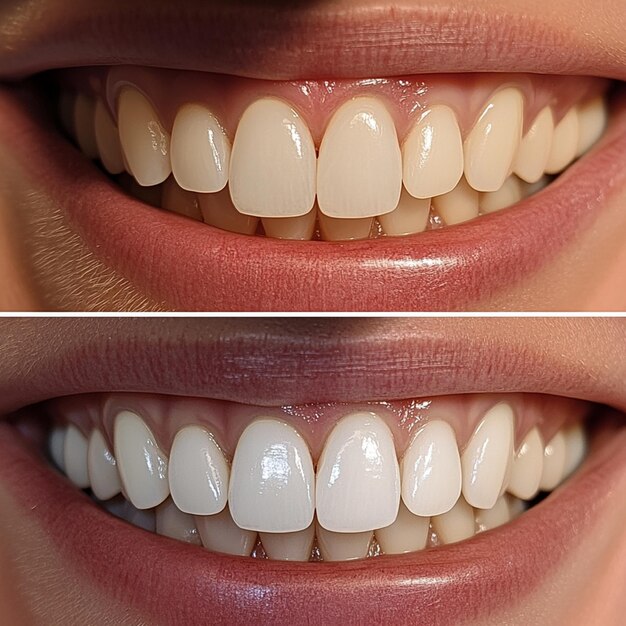
Apicectomy of Tooth
What is Apicectomy of Tooth?
Apicoectomy, also referred to as “root-end surgery,” is a dental procedure in which the unhealthy tissue around the root tip is removed. This is usually the recommended line of action when a root canal therapy fails to fully remove the infection. The major goal is to remove the infection and seal the root canal starting at the tip in order to prevent further infections.



Why Is an Apicectomy Needed for a Tooth?
When a root canal partially removes bacteria, recurrent infections may result.
1.Infections persist even after a root canal treatment.
2.There is a cyst or other pathology at the tip of the root.
3.The complex root structure of the tooth cannot be treated with a normal root canal.
4.The tooth has seen multiple root canal treatments.
Treatment for Apicectomy of Tooth
The course of treatment for an apicoectomy is divided into several stages, each designed to treat the infection and protect the tooth.
Initial Consultation
The first step is a thorough examination by an endodontist or dentist. To evaluate the condition of the tooth and surrounding tissues, X-rays will be taken. This helps determine the extent of the illness and whether an apicectomy is the best course of treatment.
Getting Ready for Surgery
Before the surgery, the patient will get thorough preparatory instructions. This may mean scheduling a ride on the day of the procedure, avoiding certain medications, and fasting if necessary.
The Surgical Procedure
Before the tooth extraction surgery, the afflicted area is made numb with a local anesthetic. A small incision is made in the gum tissue to expose the root tip. The afflicted area and the root’s tip are then carefully removed. After the root canal has been sealed with a biocompatible material, the gum is sutured back into position.
Following Surgery Care
Following the treatment, the patient will receive instructions on how to care for the surgical site. This include avoiding physically taxing jobs, applying cold packs to reduce edema, and taking prescription medications to manage pain and prevent infection.
Process for Apicectomy of Tooth
Understanding the apicectomy procedure might help patients feel less anxious and ensure they are prepared for the procedure.
Before the Apicectomy of Tooth
The body prepares for an apicectomy of the tooth days in advance of the treatment. It is advised that patients:
Eat or drink nothing for a couple hours before the surgery.
Discuss any medications they are currently taking with their dentist.
After the surgery, arrange for a ride home for them.
During the Apicectomy of Tooth
On the day of the surgery, the patient will be made to feel comfortable before the process begins. The dentist will use a local anesthetic to numb the area surrounding the tooth. The gums are cut in order to expose the tooth’s root. Using specialized tools, the dentist will remove the unhealthy tissue and the tip of the root.
After the dental apicectomy
When the procedure is complete, the dentist will suture the wound closed. Patients receive specific instructions on how to care for the surgical site.
This could include:
taking prescription drugs and antibiotics as prescribed.
reducing edema by applying ice packs.
Avoid anything hard or crunchy that can irritate the area.
maintaining oral hygiene by avoiding the surgical location and using too gentle a brush.
What to Expect After the Apicectomy of Tooth
Following surgery, patients may have some discomfort, bruising, and edema. However, these symptoms are just temporary and can be managed with the appropriate care.
The Recovery Procedure
The recovery process often takes a few weeks. During this time, you must follow the dentist’s post-operative instructions to the letter. The tooth will remain healthy and there won’t be any problems if the surgical site is properly taken care of.
Review Visits
Patients will need to return for follow-up appointments so that their healing can be monitored. To ensure complete eradication of the infection, the dentist will take X-rays, evaluate the surgical site, and extract sutures as necessary.
Long-Term Care
It’s critical to maintain oral hygiene after tooth extraction. Regular dental checkups, brushing, and flossing will guarantee the longevity of the restored tooth.


Conclusion for Apicectomy of Tooth
An apicoectomy is a necessary procedure to save teeth that are at danger of extraction due to recurring infections. Understanding the process, preparing for the surgery, and following the instructions for post-operative care are all necessary for a successful outcome. When properly cared for, an apicectomy can effectively heal infections and extend the life of the original tooth.
F.A.Q.
Srikanth Dental
The procedure itself is not painful because a local anesthetic is used to numb the area. Painkillers can be used to relieve any soreness that may arise after the surgery.
The procedure typically lasts between thirty and ninety minutes, depending on the tooth that needs to be treated and how complicated the case is.
Indeed, the primary goal of an apicectomy is to save the tooth. With proper maintenance, a repaired tooth can last a lifetime.
Any surgical procedure carries some risk, including the possibility of bleeding, infection, and damage to surrounding tissues. But these dangers are minimal when the procedure is carried out by a qualified dentist or endodontist.
Most patients are back to their normal activities within a few days following surgery. It’s important to avoid physically taxing activities for a week or more to allow for proper recuperation.
